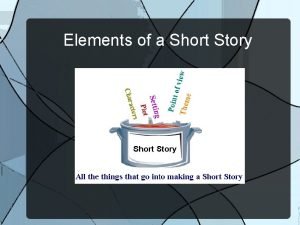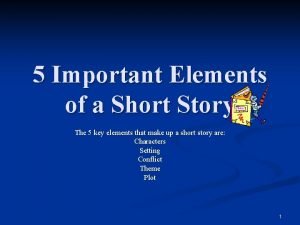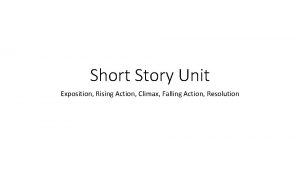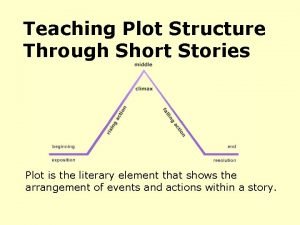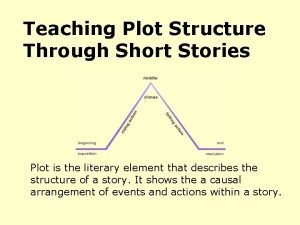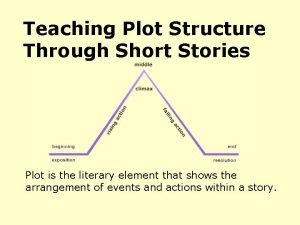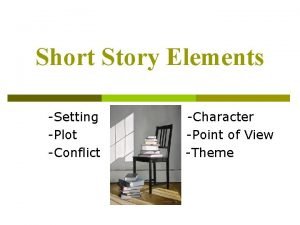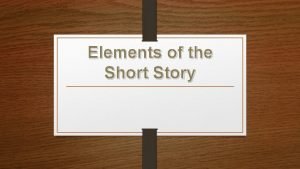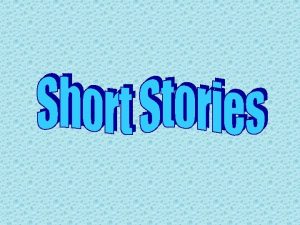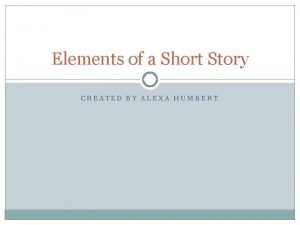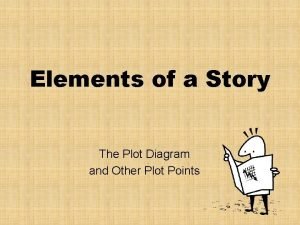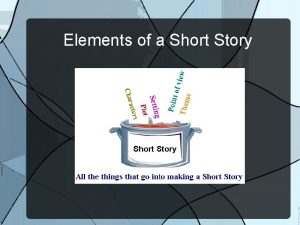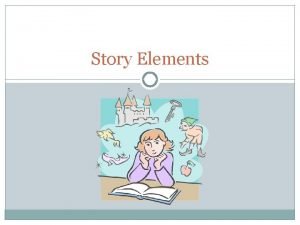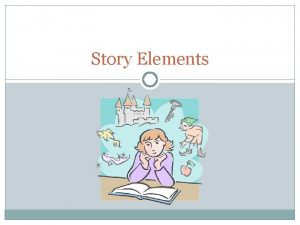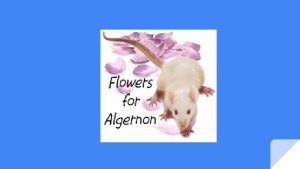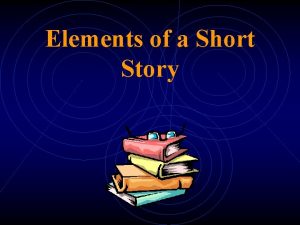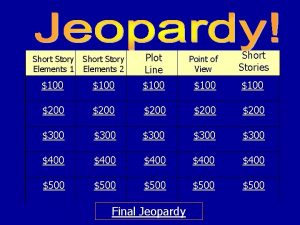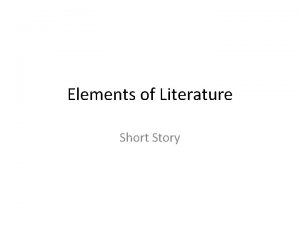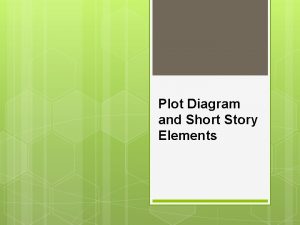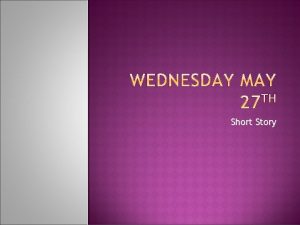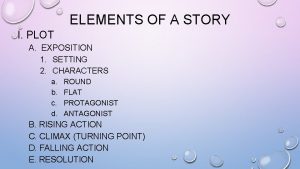Elements of a Short Story Plot Exposition introduces















- Slides: 15

Elements of a Short Story

Plot Exposition: introduces the characters, setting, and conflicts Rising Action: develops the conflict with complications Climax: when the story reaches its emotional high point; turning point Falling Action: logical result of the climax Resolution: presents the final outcome

Plot: The sequence of events in a story Plot Graph

Theme: The central message of the story A theme might give an insight into human nature or a perception about life. Sometimes authors state their themes directly. More often, a theme is implied through elements in the story, such as what happens to the main character or what the character learns.

Characters Protagonist: the main character in the story -Faces the main conflict in the story Antagonist: works against the protagonist in overcoming the conflict -Usually a character or situation the reader does not like

Static Character Static characters are minor characters in a work of fiction who do not undergo substantial change or growth in the course of a story. Also referred to as "two-dimensional characters" or "flat characters, " they play a supporting role to the main character, who as a rule should be round, or complex.

Round Character A round character is a major character in a work of fiction who encounters conflict and is changed by it. Round characters tend to be more fully developed and described than flat, or static, characters. If you think of the characters you most love in fiction, they probably seem as real to you as people you know in real life. This is a good sign that they are round characters.

How do you go about creating round characters rather than static ones? Creating complex, believable characters takes time and thought, of course, so get started by answering these questions for developing characters. – – – – – 1. Where does your character live? 2. Where is your character from? 3. How old is your character? 4. What is your character called? 5. What does your character look like? 6. What kind of childhood did he or she have? 7. What does your character do for a living? 8. How does your character deal with conflict and change? 9. Who else is in your character's life? 10. What is your character's goal or motivation in this story or scene?

Point of View Narrator: the person telling the story Point of View: the relationship of the narrator to the story First-Person Point of View: the narrator is a voice inside of the story and uses “I” in telling the story Third-Person Point of View: the narrator is outside the story, using “she” or “he” to tell the story

Voice The distinctive use of language that conveys the author's or narrator's personality to the reader Narrator: A person who tells a story, or a voice fashioned by an author to recount a narrative.

Setting: the time and place in which a story happens. The setting not only includes physical surroundings but can also include the ideas, customs, values, and beliefs of the period in which the story takes place

Conflict The struggle between opposing forces in a story or drama. Every storyline involves some kind of conflict. It is a struggle between two forces, but these forces can be either internal (feelings) or external (physical).

External Conflict External conflict can exist between two characters, like the conflict that exists between a controlling father and his youthful, mischievous son. External conflict can also be the conflict that occurs when a human encounters a physical challenge, like when a family is lost in a snowstorm. Man vs. society, Man vs. man, or Man vs. nature

Internal Conflict Internal conflict exists when a character struggles with an ethical or emotional challenge. You can identify an internal conflict when you sense that a character is constantly asking himself or herself "Am I doing the right thing? " or "Should I speak out against this behavior? " Man vs. Self

Terms to Know: Irony: difference or contrast between what IS and what SEEMS to be – 3 types – verbal, dramatic, situational Foreshadowing: hints or clues that suggest what is going to happen in the story Flashback: recalling events that occurred before the beginning of the story
 Short short short long long long short short short
Short short short long long long short short short The setting introduces the characters.
The setting introduces the characters. 5 element of a short story
5 element of a short story Wizard of oz plot diagram
Wizard of oz plot diagram Maikling kwento kahulugan
Maikling kwento kahulugan Exposition short story
Exposition short story Short story with exposition
Short story with exposition Plot diagram of shrek
Plot diagram of shrek Plot of story
Plot of story Short stories for plot diagram
Short stories for plot diagram Short story with characters, setting and plot
Short story with characters, setting and plot Short story plot diagram
Short story plot diagram Setting of the story
Setting of the story Plot of a short story
Plot of a short story Parallel plot short story examples
Parallel plot short story examples The story comes to reasonable ending.
The story comes to reasonable ending.

